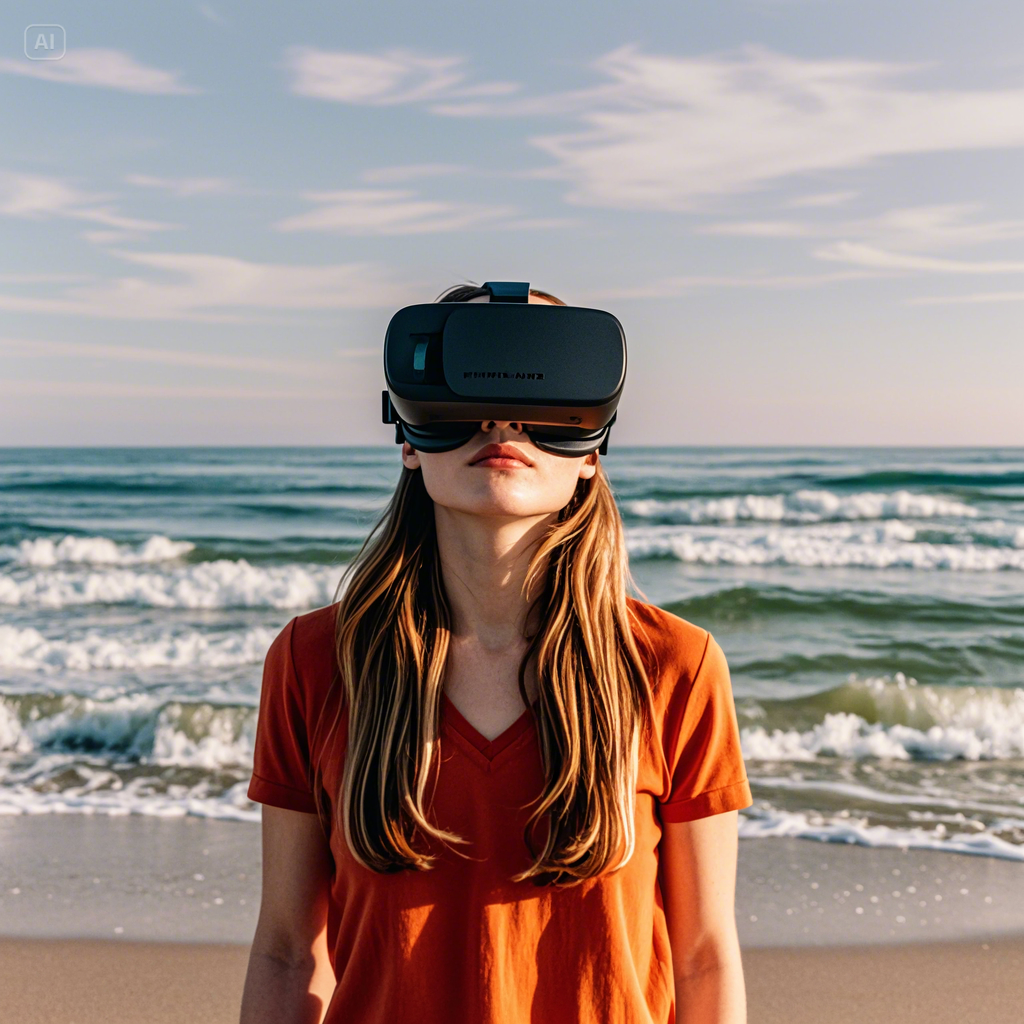
Exploring VR-Assisted Therapy: The Future of Mental Health Treatment
Exploring VR-Assisted Therapy: The Future of Mental Health Treatment 🧠 The Future Walked Into My Therapist’s Office Wearing a Headset Imagine walking into therapy and instead of sitting on a couch, you’re handed a sleek VR headset. The walls melt away, and suddenly you’re on a tranquil beach, practicing breathwork as gentle waves crash around you. No, this isn’t sci-fi — it’s the very real future of mental health support.
As mental health challenges continue to rise globally, especially among professionals and tech-savvy users, therapists and researchers are turning to virtual reality-assisted therapy to make healing more immersive, accessible, and, dare we say, engaging. But is this futuristic form of therapy truly effective, or just another tech trend?
Let’s dive in — virtually, of course.
What is VR-Assisted Therapy? VR-assisted therapy combines traditional psychotherapy techniques with immersive virtual environments. Think of it as therapy’s cooler, tech-enhanced cousin. Through headsets and guided VR apps, users can face phobias, reduce anxiety, or practice mindfulness in highly controlled, personalized settings.
Therapists might use VR to help someone with:
Social anxiety: By simulating social interactions.
PTSD: Through exposure therapy in safe, guided environments.
Depression or burnout: Using meditative, relaxing VR environments to encourage mindfulness.
And the best part? The experience can feel very real — making it an effective tool for people who might struggle to open up in traditional settings.
Why It’s Gaining Ground (Fast) Virtual reality is no longer just for gamers and the metaverse crowd. With increased affordability and powerful headsets available for under $300, VR therapy tools are making their way into mental health clinics, corporate wellness programs, and even individual homes.
🚀 Long-tail SEO keywords: virtual reality mental health treatment
VR therapy for anxiety
future of psychotherapy tools
Research Says It’s Working In recent clinical studies, VR exposure therapy has been shown to be as effective — and sometimes more so — than in-person exposure therapy for PTSD and anxiety disorders. Many users also report that the gamified feel of VR sessions makes them more willing to participate regularly.
Real-World Experiences: A Therapist’s Take Dr. Lara Simmons, a licensed therapist specializing in tech-based interventions, says:
“For my clients who are overwhelmed by daily life or don’t feel safe enough to open up, VR helps recreate calming or challenging environments in a controlled way. It’s a game-changer for trauma work.”
One of her clients, a software engineer dealing with burnout and insomnia, began integrating nightly VR-guided meditations with measurable results. “Within a month,” she says, “his sleep improved, and he felt more emotionally regulated.”
Ethical and Accessibility Considerations Okay, let’s hit pause for a moment. VR is exciting, but we can’t ignore the elephant in the virtual room — not everyone can afford the tech.
High-quality VR gear and apps may not be accessible to low-income communities or individuals with disabilities. Some may also experience motion sickness or sensory overwhelm, making VR a no-go.
That's why experts emphasize:
Offering sliding-scale pricing or open-source VR tools.
Designing inclusive environments for neurodivergent users.
Maintaining human-centered care, not replacing therapists with headsets.
Recommended Mindfulness Tools to Enhance Your VR Journey Even if you're not ready to strap on a VR headset, you can still benefit from the calming effects of tech-enhanced mindfulness. Here are a few affordable, accessible tools to support your mental health journey:
🧘♀️ Muse 2 Brain Sensing Headband Best for: Professionals looking to level-up their meditation This sleek wearable uses EEG to give you real-time feedback on your meditation sessions. It's like having a personal meditation coach — minus the judgment.
🌊 Apollo Neuro Wearable Best for: Stress management and focus This science-backed device sends gentle vibrations to your body to help regulate your nervous system. Ideal for grounding during stressful meetings or decompressing after a long day.
📱 TRIPP VR App (if you do have a headset) Best for: Immersive guided meditations TRIPP is like the “Headspace” of VR — psychedelic, beautiful, and highly effective. Users report a reduction in anxiety and increased presence after regular use.
Explore these mindfulness-enhancing tools to find the one that suits your lifestyle best.
So… Is VR the Future of Therapy? In many ways, yes. But not in a "robots replacing therapists" kind of way. Instead, VR is becoming an incredible adjunct to therapy, offering immersive, accessible ways to manage stress, anxiety, and trauma — especially for tech-savvy professionals seeking modern solutions.
And as VR becomes more affordable and widespread, its potential to democratize mental healthcare is only just beginning.
🌟 Final Thoughts + Soft CTA If you’ve ever wished therapy felt a little less clinical and a bit more you, VR-assisted therapy might be worth exploring. Whether you’re diving into guided virtual meditations or pairing a wearable with breathwork exercises, there’s never been a better time to personalize your mental health routine.
